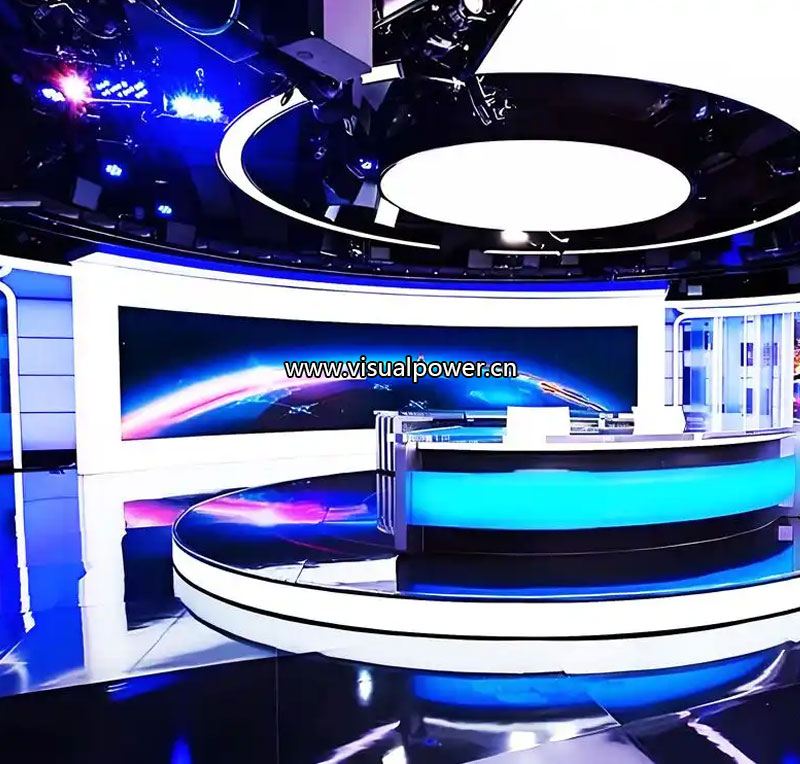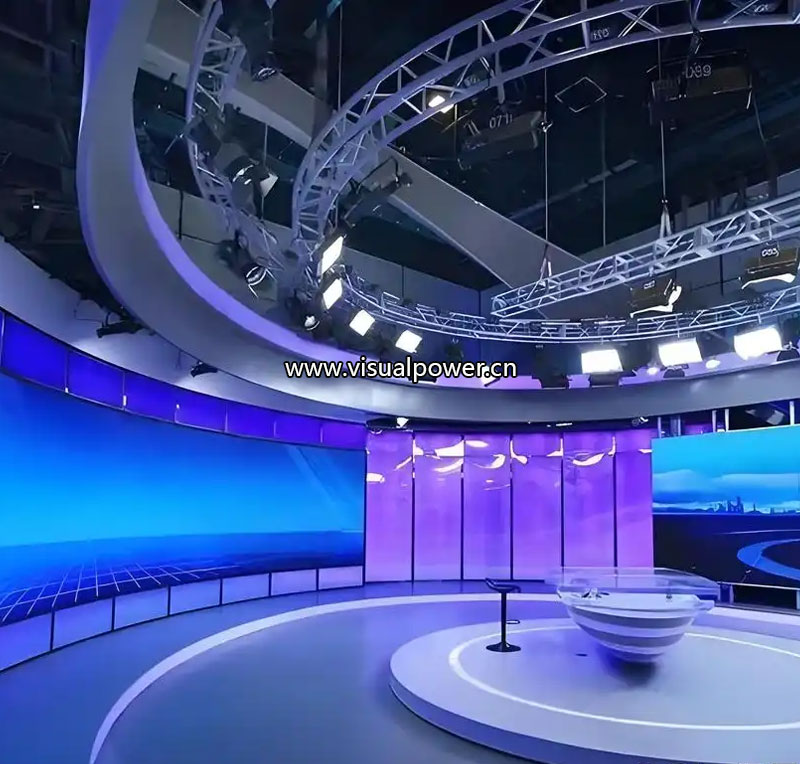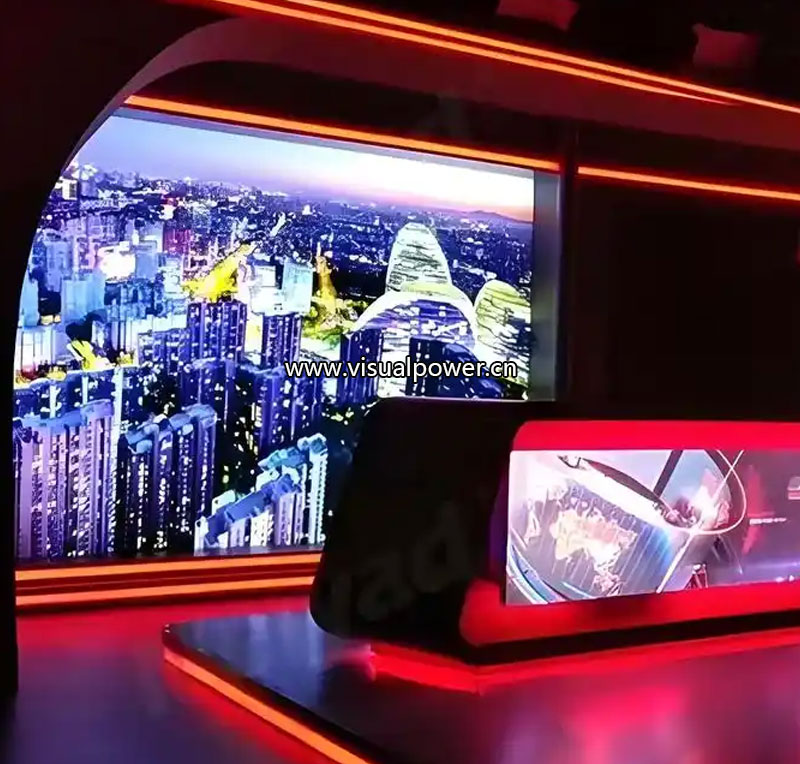Catégories
- Nouvelles (76)
- étude de cas (6)
The year I first stepped into a TV studio, it was for a behind-the-scenes observation project. It was an afternoon. The sun was dazzling outside, but the studio was like another world: calm, precise and full of technical sense. Compared with the cameras or the lights, it was those huge LED display screens that really caught my eye. Later I came to know that their name was – TV studio LED display.
Pour être honnête, I’ve seen quite a few screens before, but this type of LED is completely different from the promotional screens hung in shopping malls or the information walls in meeting rooms. It doesn’t exist for playing content; it is part of the content.

Many people think that the screen of a TV station only needs to be high-definition, but only when you actually stand in the studio will you understand that “high definition” is far from enough.
In television shooting, the picture is not only for the people on the spot to see, but also has to deal with the capture of the camera lens, the transcoding of live signals, and the final screen presentation for the audience. Even a slight color temperature deviation, unstable refresh rate, or inconsistent brightness contrast can become obvious “accidents” on the screen.
At this point, LED screens with high gray scale, high refresh rate and high contrast become extremely crucial. Especially in a high frame rate shooting environment, if the refresh rate of the LED screen is not appropriate, the picture will show “stripes”, “flickering” ou “ghosting” in the lens.
I once witnessed a scene of a blunder. Five minutes before the program started recording, the screen was adjusted and the supplier was changed at the last minute. As a result, the LED screen behind the foreground figure flashed like a special effect, causing the entire live broadcast to be delayed by 40 minutes. Cette fois, I remembered three words: refresh rate, color consistency and shooting compatibility. This is not a parameter. This is the bottom line.

Pour être honnête, nowadays many programs are becoming increasingly “visual-oriented” – from virtual reality scenes to multi-camera switching spatial scheduling, LED screens are no longer supporting roles but part of the story.
At this point, the physical splicing ability of the screen and the system integration ability become crucial. You must consider —
Is arc-shaped splicing supported?
Can the floor screen and the background screen be displayed in a linked manner?
Does it support quick content source replacement or seamless integration with the camera system?
If the answer is negative, it means that creativity needs to be compromised. At such times, I particularly admire some brands that have an extreme pursuit of design flexibility, such as visualpower, a manufacturer that focuses on LED solutions. I have used their products. They are not noisy or noisy, but they are extremely “understanding”.
Few people care about this, but I think it is the dividing line that distinguishes ordinary screens from TV studio-level screens.
Once I participated in the recording of a large-scale cultural program, and the designer created a totem background with very rich colors. The moment it was moved onto the LED screen, the different areas of the entire screen had varying shades of color, as if the palette had been overturned.
It was later discovered that the problem lay in the “brightness consistency correction” et “color gamut restoration” of the screen. A truly TV-level LED screen will have a factory-level factory calibration system to ensure that the performance of each LED bead is consistent – this is not just a manufacturing issue, but also a respect for the content.

Don’t underestimate those few hours of live program broadcasts. The operating time of the LED screen behind it could be more than five times that.
It not only needs to be bright, but also bright steadily and without any mistakes. Many studios choose screens that support 7×24 continuous operation and are equipped with excellent thermal management systems. Especially in studios with limited space and concentrated lighting, the heat dissipation design even affects the air conditioning load of the entire room.
I myself have suffered. Une fois, due to poor heat dissipation from the back of the screen, heat accumulated within half an hour, causing the driver board to burn out and the entire main background to go offline. I froze completely at that time. After that, I gained a new understanding of the so-called “studio adaptation level” : Don’t just look at the surface; thermal stability is the core for long-term stable operation.
Those who create content all have an obsession: the visuals must not lose. To achieve this, it is necessary to rely on hardcore devices like TV studio LED display as support behind the scenes.
Donc, whenever I stand in the studio and see everything progressing smoothly before me, the people in front of the stage remain calm and composed, and the equipment behind the stage operates precisely, I sincerely feel: Oui, they deserve to be taken seriously.